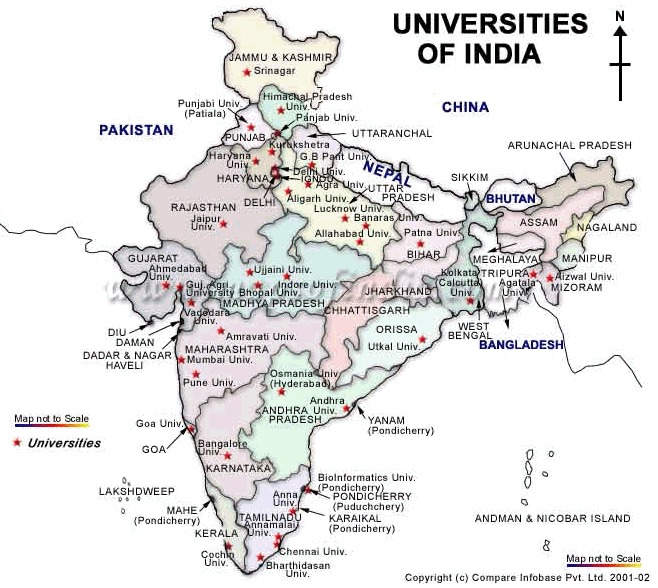|
|
|
|
|
|
|
News & Views item - March 2007 |
![]() US Universities Eye the New Educational Frontiers and Pose Mounting Competition
for Asian Dollars. (March 26, 2007)
US Universities Eye the New Educational Frontiers and Pose Mounting Competition
for Asian Dollars. (March 26, 2007)
The educational press in the United States is giving increasing attention to the ventures of its universities and colleges into Asia particular China and India for the purpose of gaining immediate income, to be sure, but only in part, they are also looking to the longer term.
That matter is or should be of some concern to Australia's entrepreneurially inclined universities as well as our federal government's short sighted view of the value of our universities.
As one well connected academic put it to TFW, "We used to have the pool in the vacant block to ourselves. Now, however, kids from the rich part of town are playing there. They play much fancier games than us, and pretty soon it will be hard for us to even get a look-in."
But to get back to the matter in hand The New York Times' Somini Sengupta writing from Chennai reports:
Vijay Muddana 21, was among a dozen ambitious young Indians [attending a video conferencing session] hoping to get a graduate degree in information technology offered jointly by Carnegie Mellon [University] and a small private college here.
The exchange was one of the many ways in which American universities, eager to expand to markets abroad, are training their sights on India.
And Ms Sengupta notes, "The Bush administration’s envoy for public diplomacy, Karen P. Hughes, is visiting India this week with a half-dozen American university presidents to promote Brand America in Indian education. The United States wants an easing of rules under a draft law on foreign investment in Indian education, which is to be introduced in Parliament in April."

US universities, who increasingly want to go global, currently have their sights set on India in particular because of its rapid economic growth which in turn reflects India's need to fill its gaping demand for higher education. Currently 160,000 Indians are studying abroad, Ms Sengupta reports, spending an estimated US$4 billion a year.
Not surprisingly Indians and Chinese make up the largest number of foreign students in the United States, and at present, "instead of setting up satellite campuses as was done in China, Singapore or Qatar, most American institutions are opting to join hands with existing Indian institutions. [For example] Columbia Business School, for instance, started a student exchange program earlier this year with the Indian Institute of Management at Ahmedabad."
On the other hand a number of US affiliated institutions offer "degrees not recognized by the Indian government, something that is still typical here. One estimate [is] that at least 100,000 students graduated from entirely unaccredited private institutions. The study found[, however,] that students did not consider unaccredited college degrees to be a hindrance to getting jobs in the private sector."
Ms Sengupta describes the current of efforts of three US universities:
California State University, Long Beach, has agreed to help start American-style, four-year degree programs at state-run Lucknow University in northern India. Its vice chancellor, R. P. Singh, said the California institution would help draft the curriculum and train faculty.
Cornell University, whose president is among the American university officials visiting India in recent months, is seeking to expand research collaborations, particularly in agriculture and public health.
Rice University envisions faculty and student exchanges, particularly in technology. “What’s in it for us is opportunities for our students, opportunities for our faculty in terms of research collaboration,” said David Leebron, the university president, who was in India in February. “At this stage we think we are best served by developing partnerships with Indian institutions.”
As for Carnegie Mellon, it partners a "small private institution, the Shri Shiv Shankar Nadar College of Engineering. Most of the course work is done at relatively inexpensive rates in India, followed by six months in Pittsburgh, at the end of which students graduate with a Carnegie Mellon degree."